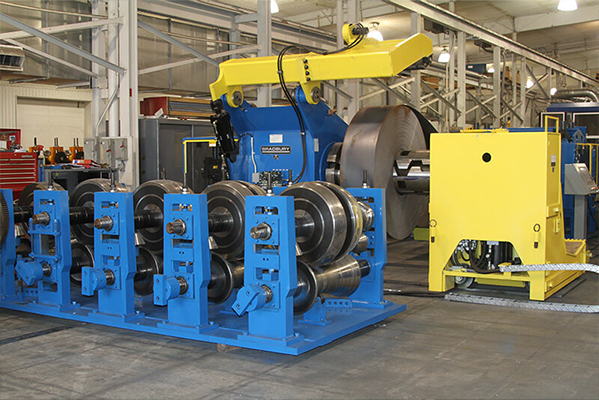Navigation Menu
Contact Us
- Email:
- info@wxavatar.com
- Address:
- Yurong Village, Yuqi Street, Huishan District, Wuxi, China.
Release Date:May 21, 2025 Visit:46 Source:Roll Forming Machine Factory
Heavy gauge roll forming equipment plays a crucial role in manufacturing industries, providing efficient and precise metal shaping for construction, automotive, and industrial applications. As industry demands grow, manufacturers are continuously improving this equipment to enhance performance, durability, and adaptability. This article explores the latest advancements in heavy gauge roll forming equipment and how these innovations address modern industrial needs.

Key Advancements in Heavy Gauge Roll Forming Equipment
1. Increased Automation and Precision Control
Modern heavy gauge roll forming systems incorporate advanced automation technologies to improve efficiency and reduce manual intervention. Computer Numerical Control (CNC) systems allow for precise adjustments, ensuring consistent product quality. Automated tooling changes and real-time monitoring further enhance production accuracy while minimizing downtime.
2. Enhanced Material Handling Capabilities
To accommodate thicker and stronger metals, manufacturers are reinforcing roll forming equipment with heavy-duty components. High-strength rollers, robust frames, and improved hydraulic systems enable the processing of high-tensile materials without compromising speed or precision.
3. Modular and Customizable Designs
Flexibility is a growing requirement in metal forming industries. Heavy gauge roll forming machines now feature modular designs, allowing manufacturers to customize tooling and configurations for different profiles. This adaptability reduces the need for multiple machines, optimizing production costs.
4. Improved Durability and Maintenance Features
To withstand demanding production environments, modern roll forming equipment is built with wear-resistant materials and self-lubricating components. Predictive maintenance systems, integrated sensors, and remote diagnostics help prevent unexpected breakdowns, ensuring longer operational lifespans.
5. Energy-Efficient Operations
While maintaining high performance, newer models of heavy gauge roll forming equipment are designed to optimize power consumption. Efficient motor systems and reduced friction mechanisms contribute to lower operational costs without sacrificing output quality.
Industry Applications and Benefits
Heavy gauge roll forming equipment is widely used in:
Construction: Producing structural steel components, roofing, and cladding.
Automotive: Manufacturing chassis parts, reinforcements, and body panels.
Industrial Machinery: Creating durable metal frames and supports.
The latest advancements help manufacturers meet tighter tolerances, reduce material waste, and increase production speeds, making heavy gauge roll forming a preferred choice for high-volume metal forming.

Conclusion
The evolution of heavy gauge roll forming equipment reflects the industry's focus on automation, durability, and adaptability. By integrating advanced control systems, stronger materials, and modular designs, manufacturers can deliver higher-quality metal products efficiently. As technology progresses, further innovations will continue to shape the future of roll forming, ensuring it remains a vital solution for industrial metal fabrication.
By staying updated on these trends, businesses can make informed decisions when investing in heavy gauge roll forming equipment to enhance their production capabilities.